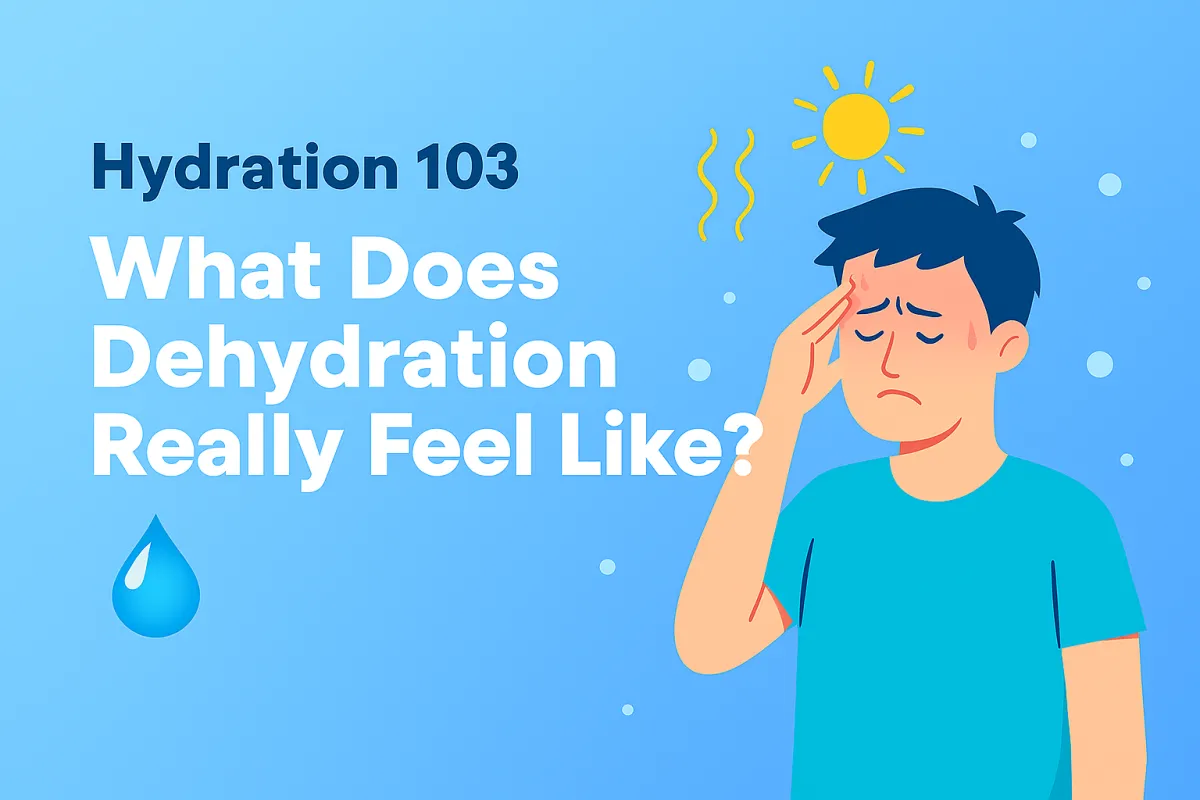
Hydration 103: Recognizing Dehydration
What Does Dehydration Really Feel Like?
Most of us think of dehydration as extreme thirst after a long workout or a hot day. But the truth is, your body begins feeling the effects long before you actually feel thirsty. Recognizing those early signs can make the difference between feeling sluggish all day and performing at your best.
Early vs. Advanced Dehydration Symptoms
Early signs:
Mild thirst or dry mouth
Slightly darker urine (pale yellow to amber)
Tiredness or lack of focus
Headache or lightheadedness
Dry lips or skin that feels “tight”
These early symptoms are your body’s gentle reminders to drink up. Ignoring them for too long can push you toward more serious dehydration.
Advanced signs:
Very dark urine or little to no urination
Rapid heartbeat or breathing
Dizziness when standing
Confusion, irritability, or fatigue
Dry, cool skin or lack of sweat even in heat
When you reach this stage, water alone might not be enough — you may need electrolytes to restore balance.
How Dehydration Affects Your Body
Energy: Even a 1–2% drop in body water can cause fatigue and reduce endurance. You might feel like your “battery” is draining faster than usual.
Skin: Dehydration makes your skin lose elasticity and appear dull or flaky. If you pinch your skin and it doesn’t bounce back quickly, that’s a telltale sign.
Focus: Your brain is about 75% water. When dehydrated, concentration, mood, and memory all take a hit — ever felt “foggy” after skipping water all day? That’s why.
How to Check Your Hydration Level
1. The Urine Color Test
A simple, surprisingly accurate tool.
Pale yellow: You’re hydrated.
Light amber: You could use a drink soon.
Dark amber or orange: You’re dehydrated — hydrate now!
(Tip: Be aware that vitamins or certain foods can temporarily change urine color, so look for patterns, not one-offs.)
2. The Thirst Scale
Rate your thirst from 1 (not thirsty at all) to 10 (extremely thirsty).
If you’re above a 5, you’re already behind on hydration.
3. The Skin Pinch Test
Gently pinch the skin on the back of your hand.
If it snaps back immediately — hydrated.
If it stays “tented” for a second or more — time to drink up.
Final Takeaway
Dehydration isn’t just about thirst — it’s about energy, mood, focus, and overall performance. By catching the early signs, you can stay one step ahead and keep your body running smoothly.
So next time you’re feeling sluggish or foggy, don’t reach for another coffee — reach for your water bottle.